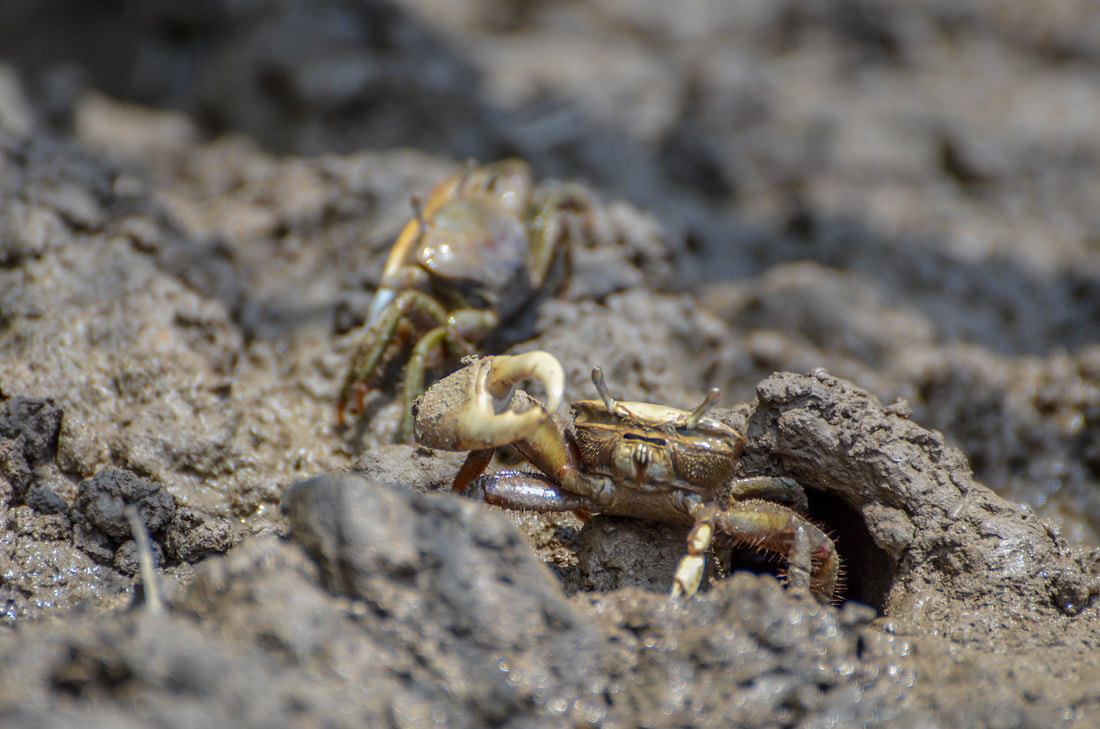MARSH DYNAMICS
|
Take another look at the marshes around the park. There are some notable differences in the mix of plants and animals found in them. Much of this is due to the differences in salt content of the marsh waters.
The tidal waters that arrive at Windsor Castle Park are brackish which means they are not as salty as the ocean’s waters. Once they enter the park area and travel further inland, these waters are diluted with freshwater that drains from the surrounding land. With this change in salt content comes a change in the community of plants and animals that live in the marshes along the creeks. |
|
Closest to Cypress Creek where the water is saltier, plants like smooth cordgrass grow closest to the water’s edge. Behind it the marsh is sprinkled with islands of big cordgrass, flattened salt meadow hay and black needle rush. Tall phragmites with its flaglike plumes grows close to the tree line. Herons, egrets, fiddler crabs, muskrats and terrapins are commonly seen in this section of the marsh.
|
|
While we look intently at what we see above ground—the swaying grasses, the stalking birds, the scurrying crabs—there is much more that is taking place in the muddy world at ground level and below. It is here that dead material accumulates whether it is dead marsh grass or what the tide has washed ashore. As it disintegrates and is attacked by a host of bacteria and fungi and other decomposers, this material actually becomes a nutrient rich package which is eagerly eaten by many small invertebrates and small fish. The fiddler crabs we see in the park are feeding on this. And who eats them? It is not hard to imagine the remaining food chain from this point. And so the food chain that starts in the mud is an important part of the story of the park’s marsh.
|
Consider the information that is given in the links below to appreciate more fully the importance and life found in marshes and wetlands.
The Value of Wetlands Chesapeake Bay Foundation Wetlands Protection After this take a walk on the wild side and go to the Marsh Picture Gallery to encounter more of the organisms that live in this dynamic place. |
 Kayaks on Little Creek ©2019 Bonnie Horne
Kayaks on Little Creek ©2019 Bonnie Horne
Finally, don’t think the marsh is only good for plants and animals. It’s good for people too. It’s good for what ails you. So good, in fact, that some Asian cultures have recognized that simply being in wild and natural areas provides amazing healing effects and is crucial to preventive health care. Their evidence shows that the benefits may range from a boosted immune system to an increased sense of happiness. So linger a while and experience the marsh’s tranquility. There is a quiet kind of magic here that is mesmerizing.













